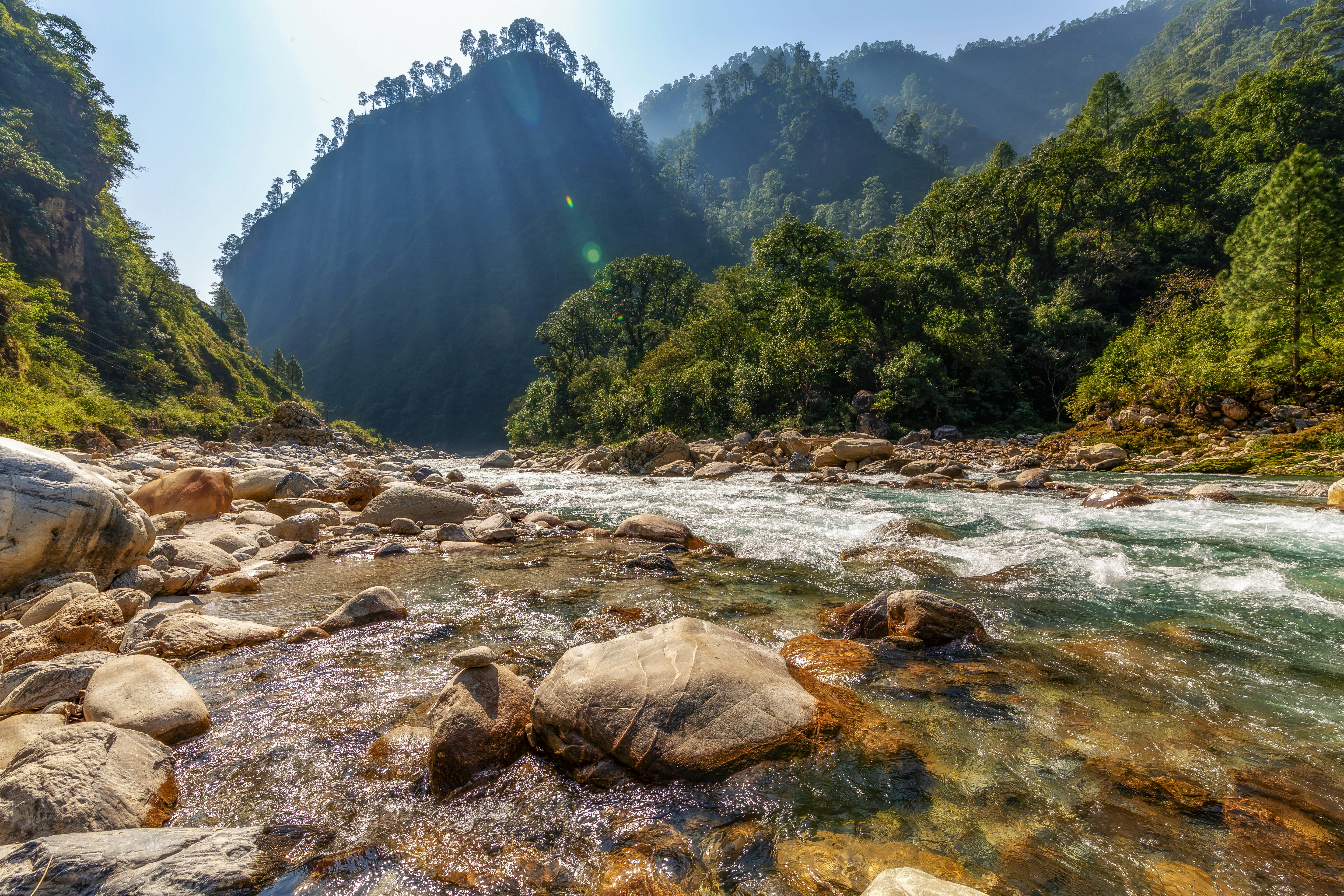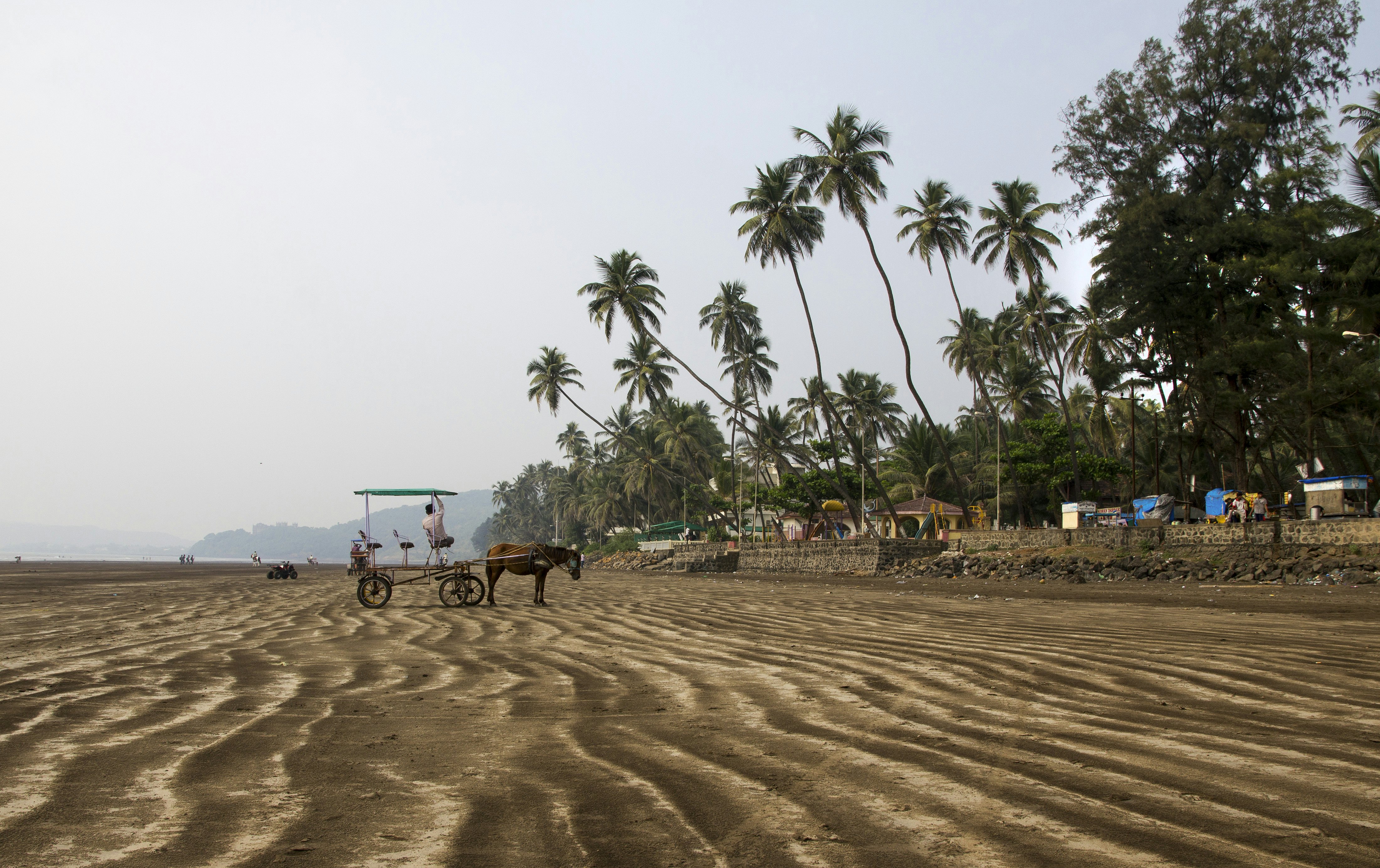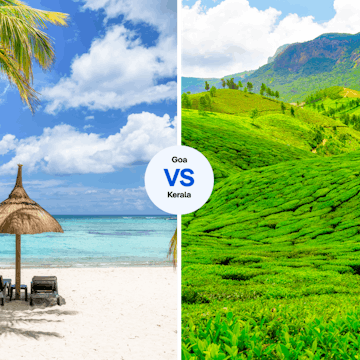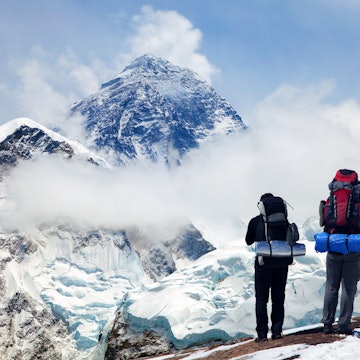
Discover where locals travel in India

The Nanda Devi temple in Almora. balajisrinivasan/Shutterstock
With extraordinary attractions like the Taj Mahal and Jaipur’s pink palaces, the dreamy beaches of Goa and Kerala, and the vibrant cities of Delhi and Mumbai, India has long been a magnet for every type of traveler under the sun.
Yet beyond these well-trodden paths, this astonishing subcontinent of a country offers a wealth of lesser-visited destinations waiting to be explored. These are not your typical international tourist hotspots – but rather the places where Indians themselves travel.
Here, four Indian writers unveil their favorite holiday destinations within their homeland. From the mystical heights of the Indian Himalayas to the laid-back shores of the Konkan region, these are the places where you can experience India like a true local.

A summer escape to apple-growing hinterlands of Himachal Pradesh: Kotkhai
Puneetinder Kaur Sidhu grew up in the plains of Punjab and has had a lifelong romance with the Himalayas.
Nestled in the apple-growing region of the Lesser Himalayas, Kotkhai is my summer escape from urban chaos. Just 70km (44 miles) away from Shimla, the capital of Himachal Pradesh, this rural idyll is dotted with traditional slate-roofed wooden houses. It has been over 30 years since my first visit as a college student. To this day, I regularly return for a fix of quiet. Misty valley views, fruit-laden orchards, lazily chomping cows and crowing roosters are an added bonus.
I usually stay at the family-run Himalayan Orchard, a farm-stay perched at the top end of a sprawling apple orchard in Rukhla village. It’s embraced by a dense deodar (Himalayan cedar) forest, with numerous well-marked hiking trails to explore. During my downtime here, I indulge in foraging for mushrooms, picking fruit, perusing a well-stocked library or simply savoring the sunset over the valley with my favorite sundowner in hand.
The sustainable farm-fresh food is yet another big draw of Himalayan Orchard. I suspect I return as much for the local specialty siddu, a steamed jaggery or lentil-filled bun paired with ghee (clarified butter), as I do for the homegrown crunchy greens, herbed sausages, homemade jams, freshly baked bread and artisanal cheese.
When visiting, set aside expectations of resort-like activities. Instead, depending on the time of your visit, consider driving up to Shararoo Pass for an unparalleled view of the Jorkandan, Chanshal and Swargarohini peaks. Take the opportunity to connect with the nomadic Gujjars (cowherds), who establish their camps in these hills during the summer months. You might also chance upon a vibrant fair held in honor of the village deity.

Snow-clad peaks and glacier-fed lakes in the Indian Himalayas: Munsiyari
Shivya Nath grew up in Dehradun, and is a travel writer and sustainable tourism consultant.
Having grown up in a valley at the base of the Indian Himalayas, I share a bond with these mountains that no amount of globe-trotting can sever. The one region that keeps calling me back is Munsiyari, in my home state of Uttarakhand. Situated close to the Tibet and Nepal borders in the Greater Himalayan region, Munsiyari is accessible by a winding 11-hour drive from the nearest train station (in Kathgodam) and airport (in Pantnagar) – which means it remains off the radar except to slow travelers, nature lovers and serious hikers from across India.
Those who do make the long journey are rewarded with breathtaking views of the five snow-clad Panchachuli peaks, forest bathing in the region's old-growth teak forests, scarlet rhododendron blooms in the spring, the gushing glacier-fed Gori Ganga river, and hikes and treks for travelers of all abilities.
What draws me back year after year is a nature-based tourism initiative called Himalayan Ark. This program beautifully bridges the realms of conservation, sustainable livelihoods and tourism, presenting opportunities for homestays led by local women and offering a unique chance to embark on hikes guided by high-altitude female guides – a rarity in the region and the tourism industry in general.
I’m always delighted to try traditional recipes here, like dubke, a stew made from locally grown black soybean; and bhang ki chutney, a spicy dip made with hemp seeds.
I often go back in the summer, when locals come together for the unique Himal Kalasutra Festival. This event is filled with bird-watching excursions, film screenings and storytelling sessions, and culminates in the traditional Mesar Mela, featuring local folklore, music and dance. While the festivities are geared towards locals, travelers are wholeheartedly invited to join. Often, the difference between the two groups is hard to tell by the end.

Old-fashioned fishing villages and standout cuisine: Alibaug
Meher Mirza is a food, travel and culture writer based in Mumbai.
A short ferry ride from Mumbai, Alibaug beckons to beach lovers like me. Yet beyond its coastal allure lies a rich history that blends indigenous roots with influences from the Buddhist, Rashtrakuta, Shilahara, Khilji, Maratha, Portuguese and British cultures.
Alibaug’s fishing communities have developed a unique and underappreciated style of Maharashtrian cooking. Favorite regional specialities include rakti (made from the congealed blood of goat), murya (seawater fish) and popti (poultry and vegetables slow-smoked in an earthen pot).
But since I can’t elbow my way into an Alibaug homestead, I settle for the unpretentious Sanman restaurant, where the chef’s Midas touch stretches to all things seafood: vividly spiced clams, a stack of bombil (Bombay duck) fried to cornflake crispness and, to finish, tiny packets of tender coconut jelly. The ever-reliable Kiki’s Café and Deli serves up a feast of Indian, Italian and Middle Eastern dishes.
As the number of wealthy visitors swells (even Bollywood star Shah Rukh Khan has a bungalow here), the town has become increasingly dotted with upmarket stores, art galleries and restaurants. Luxury villas, affordable short-term rentals and even a posh hotel property – the Radisson Blu – abound. One of the nicer places I’ve stayed is the Villa Beira Mar, a pet-friendly poolside villa with five bedrooms (and rather eye-watering prices).
Alibaug’s beaches are beautiful, yes – but this is a great spot for history enthusiasts, too. Its landscape is adorned with crumbling structures, once formidable fortresses of the Marathas and Portuguese, now silent reminders of bygone eras. Among them, the 16th-century Revdanda fort, initially constructed by the Portuguese and later wielded by the Marathas and British, is especially worth a visit. Additionally, the town boasts a sprinkling of ancient temples and vernacular-style bungalows, adding to the rich historical tapestry.

A peaceful abode in the Kumaon Himalaya: Kasar Devi
Shubham Mansingka is a travel blogger from Kullu Valley who loves offbeat adventures.
The Kumaon hills see their fair share of holidaymakers flocking to renowned hill station towns like Mussoorie, Nainital and Mukteshwar. However, nestled quietly near Almora, the cultural capital of Uttarakhand’s Kumaon region, you'll discover Kasar Devi, an unassuming town that remains a cherished secret among seasoned travelers.
My own journey to Kasar Devi began nine years ago, on a scorching summer afternoon when I was looking to escape the crowds on a long weekend. Since that initial visit, I’ve returned countless times – and even spent a quarter of a year living in a charming forest cottage during the COVID-19 pandemic.
A stroll through Kasar Devi unveils breathtaking vistas of towering Himalayan peaks, including the majestic Mount Trishul and Nanda Devi, both soaring above 7000m (29,650ft). Here, every walk becomes a potential hiking adventure, with some leading to ancient temples, concealed waterfalls or even the chance to spot a graceful deer. I often stumble upon a peaceful green meadow during my explorations: the perfect setting for an impromptu picnic surrounded by nature’s beauty.
One of my favorite trails starts from Papershali, meanders through pine and rhododendron groves, and ultimately leads to the quaint farming village of Balta Badi, where the green fields glisten in the afternoon sunshine. An evening hike to the 6th-century Kasar Devi Temple is a must, where you can witness a breathtaking sunset after your prayers or moments of contemplation.
On my visits, I have stayed at accommodations ranging from rustic village guesthouses to stylish boutique properties. Yet it’s The Kumaon that stands out for me: a striking building that seamlessly blends bold modern design with traditional materials. The views are pretty special, too.
I’m drawn back time and again to the holistic resort Ayurvaid Kalmatia, and its fresh, made-to-order cuisine. After dining, you can enjoy rejuvenating Ayurvedic treatments. Occasionally, I venture into Almora bazaar to relish local delicacies, including the irresistible baal mithai and singhaudi, both signature sweets available at Kheem Singh Rautela Sweets.



















